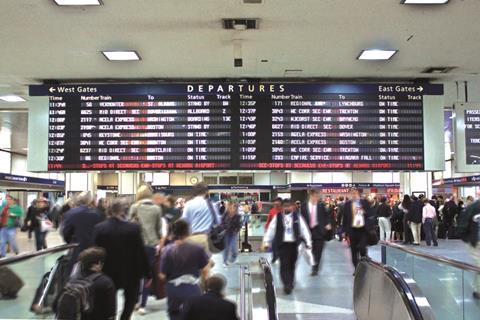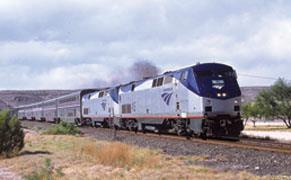
USA: After a hotly contested process lasting more than a decade, the Federal Railroad Administration published a Final Rule on November 16 establishing metrics and minimum standards to measure the performance and service quality of inter-city passenger trains.
As part of the Passenger Rail Investment & Improvement Act 2008, the US Congress passed legislation calling for a minimum standard for on-time performance by Amtrak trains. This provided for host railroads to be investigated and possibly fined if freight trains were being prioritised ahead of passenger services. However, the freight operators and the Association of American Railroads initiated a series of legal challenges to overturn the proposals. Various court rulings determined that metrics could be set, but suggested that giving the Surface Transportation Board powers to settle any disputes was unconstitutional. The case reached the US Supreme Court on two occasions, but last year the court declined to hear another AAR appeal.

In order to clarify the situation, FRA issued a Notice of Proposed Rulemaking in March, which was followed up by a telephone hearing in April. The agency says it received more than 320 written comments in response to the proposals.
‘There are a lot of voices and perspectives in this conversation’, explained FRA Administrator Ronald Batory. ‘We’ve listened and worked diligently to create the best solution for all. When I personally met with the leaders of Amtrak and the nation’s largest freight railroads earlier this year, I impressed upon them the need for the travelling public to have reliable passenger rail service. The final rule reflects a commitment to improving Amtrak’s performance in the modern-day freight rail environment. Everyone relying on one standard means that when problems arise, we can all speak the same language to work toward a common goal. This final rule is a major accomplishment for this administration and a huge victory for the travelling public.’
On-time performance
The final rule due to come into force on December 16 requires Amtrak to agree its schedules with the various host railroads, and determines how punctuality should be measured over any two consecutive calendar quarters. It establishes a minimum standard that 80% of passengers on any given train should arrive at their destination within 15 min of their scheduled arrival. Other metrics relate to ridership, train delays, station performance and running time.
Amtrak already published monthly data on train performance for both its own routes and those where it operates over the various freight railroads. It recently published an annual ‘report card’ for the year to September 30, which showed that delays were averaging 600 min per 10 000 train-km. The six largest freight railroads were deemed to have caused 68·8% of the delays against 22·9% for Amtrak and 8·3% for third parties.

According to Amtrak, the FRA rule ‘fulfils the intent of Congress to create a framework to help ensure that Amtrak customers arrive at their destination on time, and if they do not, the responsible parties are held accountable. If the standard is not met, the Surface Transportation Board can investigate, and if it finds that the poor performance was attributable to a failure to provide Amtrak passengers with preference over freight trains, damages and other relief can be awarded.

‘This is a victory for Amtrak customers and for anyone who believes people and communities across the country deserve a world-class passenger rail network with schedules that you can count on. For too long, many freight railroads have put their cargo ahead of our passengers — in direct opposition to the law. This rule will help Amtrak enforce its rights when they are violated.’
AAR told local media that its members were reviewing the final rule to consider whether it met the key principles that the organisation had put forward in June as part of its response to the FRA proposals. Those included concerns over the use of ‘outdated’ schedules, the need for a dispute resolution process, and the need for near-real-time, station-specific ridership data.

















